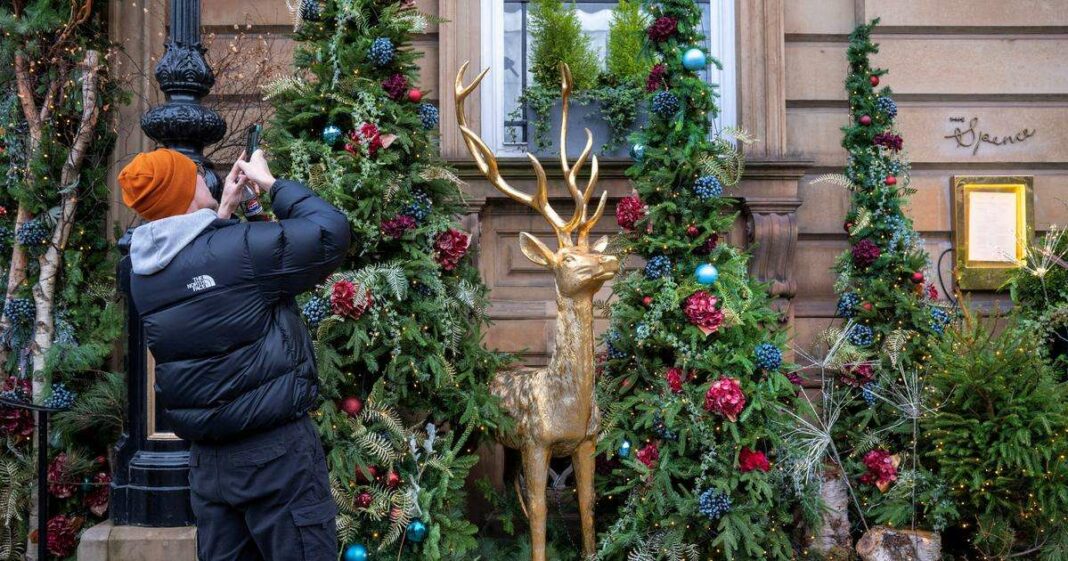The holiday season brings both joy and challenges, particularly in choosing the perfect Christmas tree. In 2023, natural trees were favored by 5.3 million households in France, despite the rising popularity of artificial options. Factors like type, cost, and environmental impact play crucial roles in decision-making. Consumers are increasingly leaning towards local producers for a sustainable choice. Understanding certifications and tree origins is essential for making an eco-friendly selection, ensuring a festive yet responsible celebration.
The Enchantment of Christmas Shopping
The holiday season is upon us, bringing with it a blend of joy and challenges. Among the most significant hurdles? The art of Christmas shopping. From thoughtful gifts and festive meals to the quintessential Christmas tree, the quest for the perfect conifer is on. In 2023, approximately 5.9 million households in France welcomed this iconic symbol of the season into their homes. However, selecting the ideal tree can be daunting. Should you opt for a Spruce or a Nordmann? Will you buy from a large retailer or a local producer? And what about choosing between a natural or artificial tree? Fear not, we’ve got you covered with four essential questions to guide your decision-making.
Natural vs. Artificial Trees: What’s the Right Choice?
When it comes to Christmas trees, natural options remain the most popular choice among consumers, with around 5.3 million opting for them in 2023, compared to just 600,000 who chose artificial trees. While an artificial tree may seem like a more economical investment—averaging around €56.30 compared to €31.19 for a natural tree—its longevity comes into play. An artificial tree can last for several years, making it a potentially cost-effective choice in the long run.
However, it’s crucial to consider the environmental impact. Although some believe that purchasing an artificial tree is a more eco-friendly choice because it saves a tree, this is misleading. The majority of artificial trees sold in France are manufactured in China using petroleum products, resulting in a considerable carbon footprint from both production and transportation. According to the Agency for the Environment and Energy Management (Ademe), a natural tree generates approximately 3.1 kg of carbon, while an artificial one emits about 8.1 kg. To balance its carbon footprint, an artificial tree would need to be used for at least twenty years, yet its average lifespan is only six to seven years.
Choosing the Right Type of Tree
When it comes to selecting the right type of tree, personal preference, budget, and durability play critical roles. The Nordmann tree is a favorite among French consumers, making up 78.4% of sales as per VALHOR statistics. Its key benefit lies in its remarkable longevity, with needles that can last three to four weeks, allowing you to enjoy a festive atmosphere right from early December.
On the opposite end, the Spruce offers a delightful resinous aroma that fills your living space with the quintessential “Christmas scent.” However, it tends to be less durable, making it best to purchase just days before Christmas to ensure freshness. Additionally, the Spruce is generally more affordable, averaging €25.4, compared to €32.8 for the Nordmann. Ultimately, your decision may hinge on whether you prioritize durability, fragrance, or cost.
Where to Buy: Big Retailers vs. Local Producers
When it comes to pricing, large retailers often have the upper hand due to their ability to leverage high sales volumes. During the holiday season, trees may even be sold at a loss to attract customers. For instance, Intermarché offers vouchers worth 25% of the tree’s purchase price, while Ikea takes it a step further, compensating 100% of the tree’s cost in vouchers for loyalty cardholders starting December 26.
Despite this, many consumers gravitate toward smaller businesses. Garden centers and local agricultural self-service outlets account for 28% of sales, nearly matching the 29% from large retailers. This trend appears to be shifting, with larger chains experiencing a 2% decline in market share, while smaller outlets see a 4% increase. These local businesses often provide a broader selection of tree varieties and sizes, albeit at slightly higher prices. Some also offer incentives, such as Botanic’s voucher program for returning trees post-holiday.
Alternatively, consider purchasing directly from a producer. The French Association of Natural Christmas Trees has a comprehensive list of nurseries across the country. This option not only guarantees a freshly cut tree sourced locally but also helps you avoid intermediary costs.
Eco-Friendly Choices for a Sustainable Christmas
Buying a truly eco-friendly tree is achievable with a few mindful practices. Understanding the origin of your tree is vital, especially since 20% of trees sold in France in 2023 were imported from countries like Belgium or Denmark, increasing their carbon footprint due to transportation. Rest assured, buying locally does not equate to deforestation, as most “made in France” trees are cultivated on designated lands specifically for this purpose.
Pay attention to certifications as well. The “Organic Farming” label is the most stringent, ensuring no harmful pesticides or fertilizers were used. Other labels, such as “Plante Bleue” and the Dutch MPS certification, also indicate adherence to environmental standards. However, be cautious with the “Label Rouge,” which only guarantees aesthetic quality, not the tree’s origin or pesticide-free status. Armed with this knowledge, you’re now equipped to make the best choice for your Christmas tree this season!
